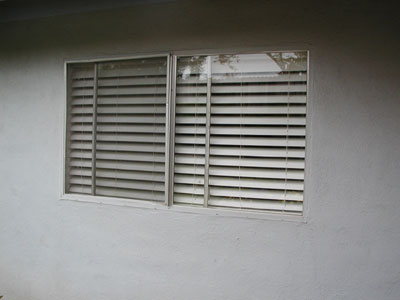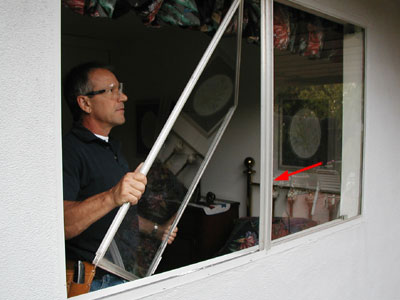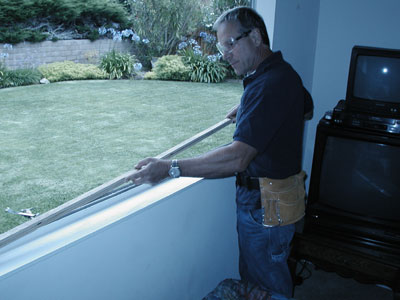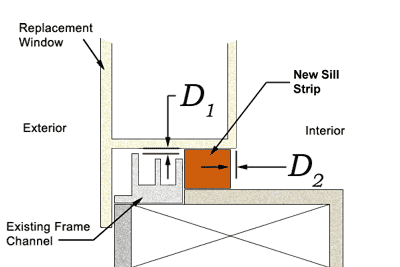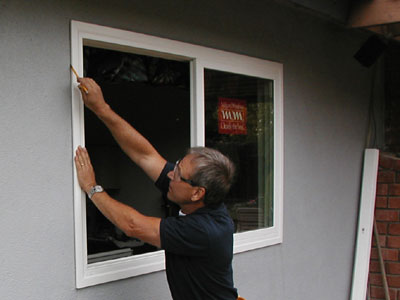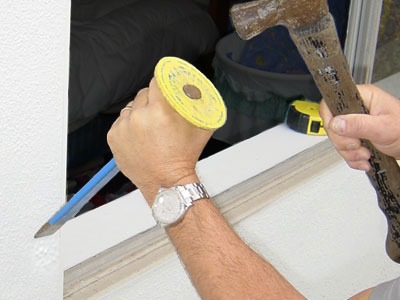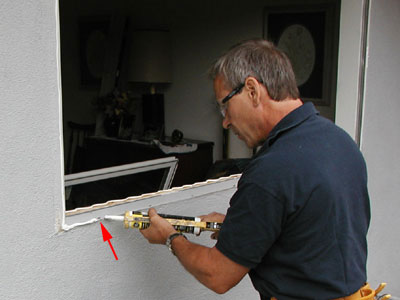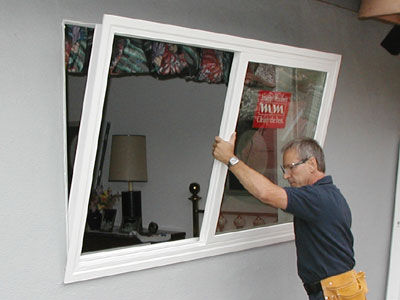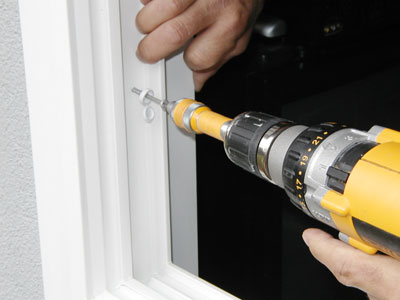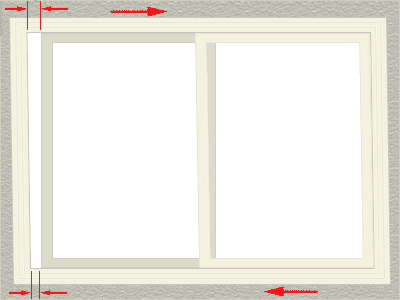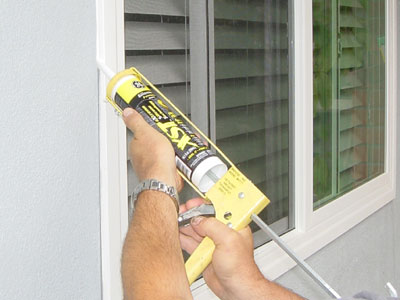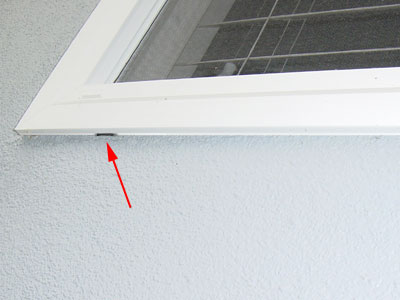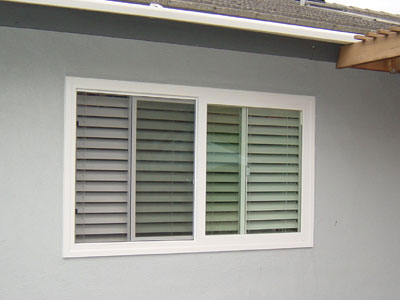These are the steps involved in a typical aluminum horizontal sliding window to horizontal replacement installation. Every situation is different and it is impossible to represent every one here but the fundamentals are the same for this type of replacement. If you have a different type of window removal or installation than the one featured, please e-mail us. If possible, include a digital image to give us a better idea of your window. We will get back to you shortly to let you know how to replace it or whether we think you need professional help.
Handling glass is very dangerous so use every precaution when removing and replacing your windows.
In compiling this instruction manual, we followed all recommended guidelines from both the window manufacturer (Milgard) and AAMA (American Architectural Manufacturers Association).

